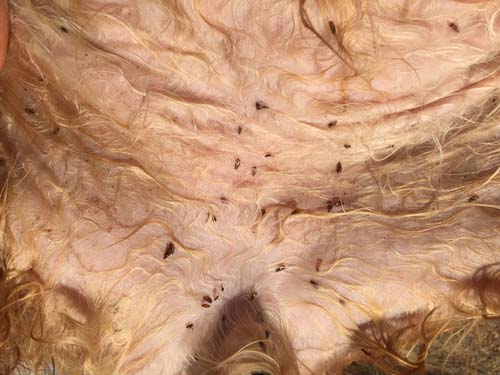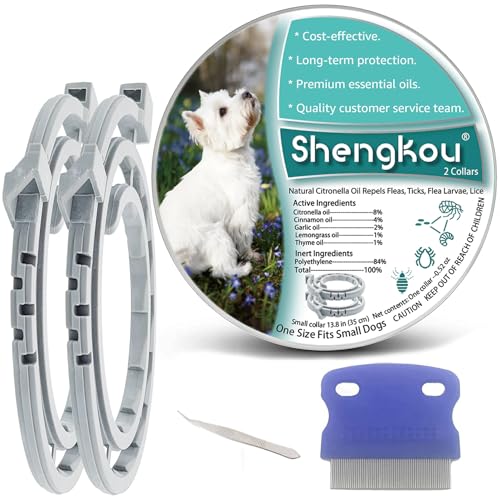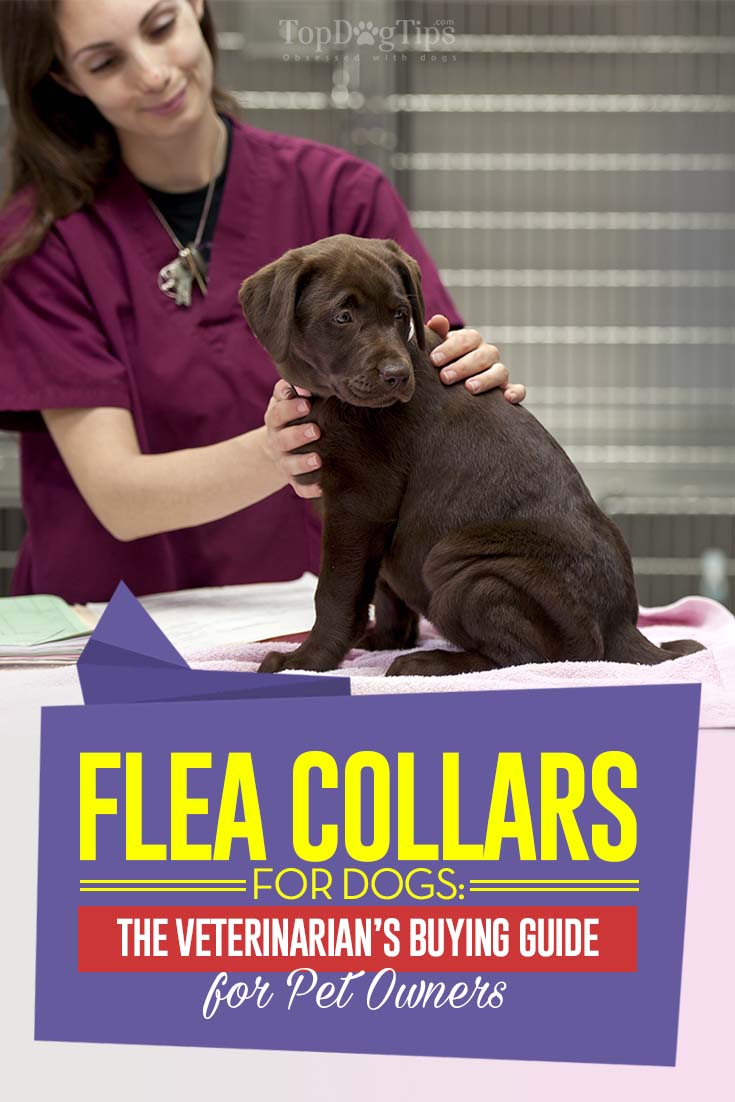
Table of Contents
Fleas have been a nuisance to dogs and their human companions for millennia. In the last 50 years, flea control has become much more effective and convenient, with a wide variety of products. Sprays, topicals, pills, and flea collars for dogs have all been developed to wage war on this ancient parasite.
With so many options, pet owners are often confused about which are the best flea treatments for dogs, how they differ, and how to pick the right one for their pooch. In this article, I will walk you through the most popular choice, the flea collar for dogs, what you should know about these products, and how to shop for the right one.
ALSO READ: The Best Flea Collars for Dogs
Meet the Flea
To understand how flea collars for dogs work, it's important that you know your and your dog's most infamous enemy: the flea.
The dog flea (Ctenocephalides canis) lives off the blood of dogs. Adult female fleas lay eggs on the animal or in the surrounding environment where the dog lives. The eggs then hatch into larvae and then form pupae before becoming adults. Fleas have a very high rate of reproduction. Their lifespan is about 9 months. Fleas lay about 50 eggs per day.
This is why flea infestations can be very difficult to control.
Signs of a flea problem include increased scratching, hair loss, seeing live fleas on the dog, and observing “flea dirt” (looks like black pepper on the dog or where he sleeps). Most commonly, flea infections start around the base of the tail. If you notice your dog chewing at the base of their tail, pick up a flea comb – fleas may be the culprit.
Here's what a flea infestation might look like:

Flea infestations or even a few flea bites on a dog can cause serious health issues. Dogs can become allergic to the flea’s saliva, making just a few bites extremely uncomfortable and itchy. Dogs frequently lose and damage their hair and skin from scratching, predisposing them to secondary bacterial and yeast infections. Other types of worms and parasites may infect the dog. Tapeworms, such as Dipylidium caninum, infect the dog after the dog ingests a flea carrying the tapeworm cysticercoid.
Beat the Flea with Flea Prevention
The key to proper flea prevention is to break the flea’s life cycle in as many places as possible, as demonstrated in several studies. Killing only the adults will not prevent more adults from developing from the egg, larval, or pupal stages. This is where flea collars for dogs will come in handy and have been scientifically proven to be effective.
Many topical and oral insecticides, like flea pills currently available on the market, do this quite well, too. However, in severe infestations or outdoor settings, environmental control is needed. Finally, when you have a flea infestation at home, it also helps to eradicate them using other tools, such as electric flea traps and powders.
Different Flea Collar for Dogs Brands
A dog flea collar is made of durable plastics and contains specific insecticides. The insecticides that are used in both traditional and newer-generation flea collars for dog products vary widely. The best ones will break the flea’s life cycle in multiple places, last for several months, and are safe for everyone in the household.
Remember that just like bacteria and viruses, fleas can develop resistance to insecticides over time, thus rendering those chemicals ineffective. The active ingredient in the flea collar for dogs is the key to how effective that collar will be, and new-generation collars are likely to have new insecticides, which will be more effective at killing fleas.
Let's take a look at some of the better-known dog flea collars, how they work, their active ingredients, and the advantages and disadvantages of each product.
New Generation Flea Collars
1. Shengkou Flea and Tick Collar
 This collar stands out because it uses an all-natural formula to get rid of ticks and fleas. On top of that, it's cheaper compared to other popular brands, but it does not compromise quality. Its active ingredients include Citronella, Cinnamon, Garlic, Lemongrass, and Thyme oil. It leaves a non-greasy feeling, and it works on cats too!
This collar stands out because it uses an all-natural formula to get rid of ticks and fleas. On top of that, it's cheaper compared to other popular brands, but it does not compromise quality. Its active ingredients include Citronella, Cinnamon, Garlic, Lemongrass, and Thyme oil. It leaves a non-greasy feeling, and it works on cats too!
Benefits of Scalibor dog flea collars:
- Effective for up to 12 months
- Water-resistant
- Easy to use
- Cost-effective
- No greasy residue
- Fresh citronella smell
- Can be purchased online or through your veterinarian
- One of the most effective flea dog collars out there
Disadvantages of Shengkou collars:
- The collar can become lost or broken, especially on outdoor dogs
- It may not be effective enough for dogs with flea bite allergy
- As with any collar, the collar can be chewed off – potentially predisposing the pet to digestive upset or obstruction.
- Efficacy is decreased for dogs that wear the collar and swim regularly or are bathed frequently.
- Needs to be applied 1-2 weeks before tick exposure to work against ticks
2. Seresto (Bayer) Imidacloprid/Flumethrin Collars
 Imidacloprid is an older but “tried and true” safe insecticide, first registered for use on animals in the European Union in 1997. It works by killing adult and larval fleas. It is distributed from the collar to the skin and hair follicles, with very small amounts being absorbed into the dog’s body.
Imidacloprid is an older but “tried and true” safe insecticide, first registered for use on animals in the European Union in 1997. It works by killing adult and larval fleas. It is distributed from the collar to the skin and hair follicles, with very small amounts being absorbed into the dog’s body.
It is metabolized into inactive substances that are mainly eliminated in the dog’s feces. These inactive metabolites do not appear to affect other insect species that may have contact with dog feces, including bees.
Flumethrin was first approved for use on companion animals in 1986. It has a long track record as a safe and effective insecticide for ticks and mites and is well-documented.
These two insecticides work together well, as most dogs need both flea and tick prevention while outdoors. Imidacloprid is also the active ingredient in the topical product Advantage, a well-known brand.
Benefits of using Seresto flea collar for dogs:
- Starts to repel and kill fleas within 24 hours of the initial application
- Repels and kills adult fleas, flea larvae, ticks, and lice and can treat sarcoptic mange infestations.
- Lasts for 8 months
- Non-greasy
- No odor
- Convenient to use
- Safe for cats in the household (but not to be used on cats)
- Safe for puppies over 7 weeks of age
- Water-resistant (good for baths once a month and occasional swimming); if your dog is bathed more often than once a month or swims frequently, remove the flea collar to retain its potency.
- Trusted and Recommended by Veterinarians
- Can be purchased online or through your veterinarian
Disadvantages of Seresto collars:
- Use caution in households with children. Do not allow children to touch or play with the collar
- The collar can become lost or broken, especially on outdoor dogs
- It may not be effective enough for dogs with flea bite allergy
- It may not be effective in areas of the southeastern United States or where the flea burden is high
- As with any collar, the collar can be chewed off – potentially predisposing the pet to digestive upset or obstruction.
- Efficacy is decreased for dogs that wear the collar and swim regularly or are bathed frequently.
- Needs to be applied 48 hours before tick exposure for maximum efficacy
3. Generic Deltamethrin-containing Collars
Several non-name-brand deltamethrin flea collars for dog products are available to buy over the counter. These boast 6-month protection, similar to that of Scalibor collars (above), and most veterinarians recommend them.
Brands include:
Traditional Flea Collars for Dogs
 Typically, traditional flea collars for dogs, like the Zodiac Flea and Tick Collar, use older insecticides that fleas may have developed resistance to over time. Newer generations of flea collars described above are generally safer and more effective than older-style dog flea collars.
Typically, traditional flea collars for dogs, like the Zodiac Flea and Tick Collar, use older insecticides that fleas may have developed resistance to over time. Newer generations of flea collars described above are generally safer and more effective than older-style dog flea collars.
Most traditional flea collars all contain the same active ingredient: tetrachlorvinphos (TCVP). The TCVP active ingredient is an insecticide that kills both fleas and ticks. It was first registered for use in 1966.
Examples of traditional flea collars for dogs include:
- Zodiac Flea and Tick Dog Collar
- Hartz Ultraguard Flea and Tick Collar for Dogs
-
- Bio Spot Active Care Flea and Tick Collar for Dogs
Advantages of TCVP dog flea collars:
- Ease of application
- Works well in areas with low flea burden
- Much less expensive than collars made by Bayer or Merck
- It can be purchased at grocery stores, pet stores, or online
Disadvantages of TCVP dog flea collars:
- As with all flea collars, use with caution in households with children. Do not allow children to touch or play with the collar
- Do not use it on old or debilitated animals. A warning is on the product packaging
- Foul odor
- Does not work for very long. Hartz reports that the collar works for 7 months, but typically, consumers note it lasts maybe a month or two.
- Some customer reports that the collar is not working at all.
- Typically, it is not vet-recommended due to foul odor and lack of long-term efficacy.
ALSO READ: The 50 Best Flea Treatments for Dogs (as chosen by pet owners)
General Concerns Regarding Flea Collars
Do flea collars cause cancer?
The best answer to this is – we don’t know. The science is still unclear on this subject, and there's no conclusive evidence one way or another.
Many things can predispose an animal to develop cancer – including sunlight. Certain chemicals are known carcinogens. So far, the insecticides that are used in flea collars for dogs are not known carcinogens.
Do flea collars kill cats?
Dog-specific flea collars can potentially kill or at least make cats very sick. Certain insecticides, called pyrethrins, are especially toxic to cats. Pyrethrins are primarily used in dog tick collars. Never use a flea or tick collar labeled for dogs on a cat. When a flea collar for dogs is safe to use around cats (not on cats!), it will usually say so on the package.
Could my dog be allergic to a flea collar?
It is possible for dogs to be allergic to the plastic or active ingredient in the flea collar. If your dog is allergic to topical products that are applied to the skin, be wary about using a flea collar. Talk to your veterinarian about an oral flea preventative instead of using a flea collar for dogs.
What are the health concerns regarding flea collars, insecticides, and human contact?
Scientists are still figuring this one out. If you are concerned about how harmful these substances might be to human health, the EPA’s website is a great resource to get the most up-to-date information.













